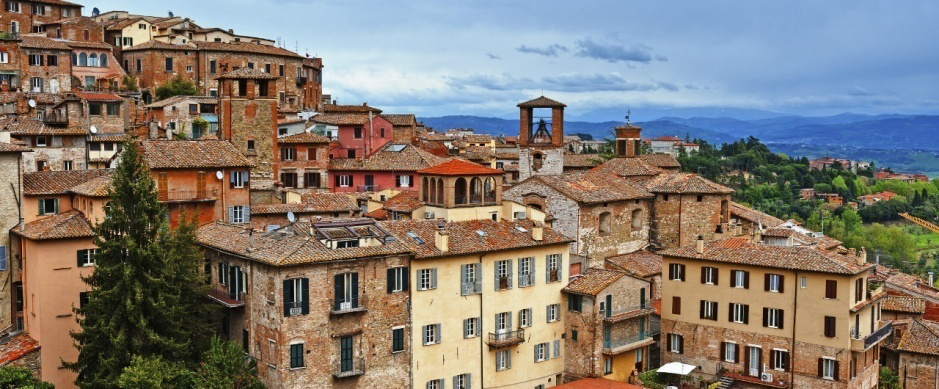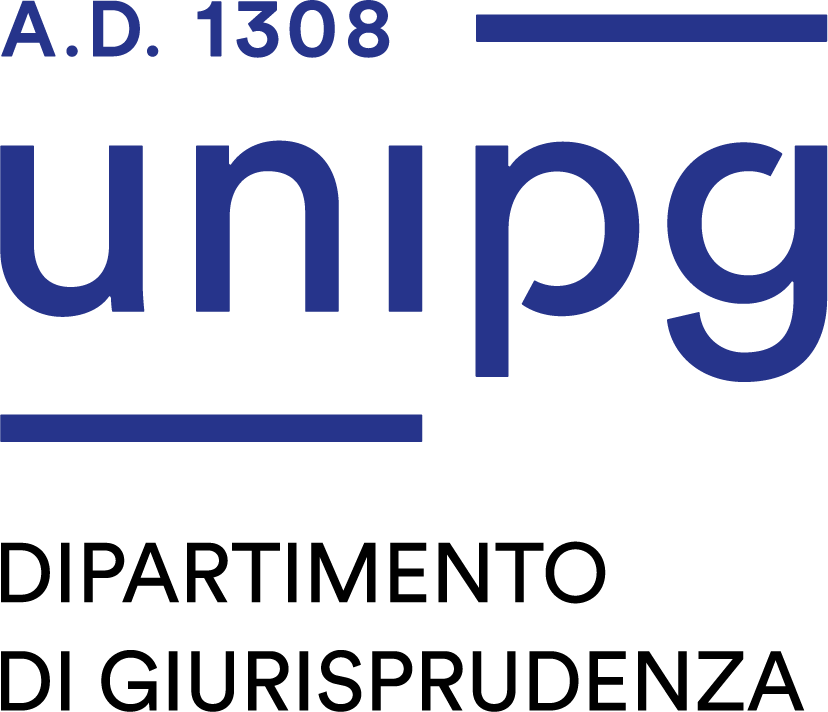PERUGIA
Perugia is the capital of Umbria, a green and historic region of Central Italy. Perugia is known for its culture,
art, festivals, markets, ancient University (founded in 1308) and as birthplace of painter Pietro Vannucci
(Perugino), who taught Rapheal. See Perugino’s frescoes in the Sala del Cambio. See the Fontana Maggiore,
a medieval fountain in Piazza IV Novembre; the Cattedrale di San Lorenzo and the National Gallery of Umbria
which holds paintings by Perugino.
All that remains of the Rocca Paolina fortress are the substructure walls. It is possible to enter the foundations
of the former fortress at Piazza Partigiani and go through the Rocca all the way to the Piazza Italia where you
are surrounded by 19th century buildings. This is a truly unique experience. The Etruscan well is an unusual
site dating back to c.300BC. See the Volumni Hypogeum; the oldest preserved Etruscan funeral monument
and the Oratorio di San Bernardino. In addition to the quaint areas of Perugino and the historic sites it is a
modern city larger than many of the hilltop towns of the area. Perugino even has a minimetro which looks
quite futuristic among the historic buildings.
Perugia is also known as the Italian capital of chocolate for the International brand Perugina and the many
hand crafted chocolateries.
Every year Perugia holds three major International events: Umbria Jazz (July), the EuroChocolate (October)
and the International Journalism Festival (April).
HOW TO GET TO PERUGIA
Plane
Perugia has its own airport PEG (S. Francesco Airport). It is connected to several major cities, you may flight
directly to Perugia from London, Bruxelles and Frankfurt. There is a bus service to take you to Perugia city
center (Piazza Italia) and it is scheduled according to flight arrival.
If your flight is to Rome, there are two airports Fiumicino and Ciampino. Roma Ciampino. Ciampino airport
is connected by shuttle bus to Anagnina on Rome subway system (Line A). From there take a train to Perugia.
If you flight to Roma Fiumicino FCO (also called Leonardo da Vinci), there are also several buses every day
operated by Sulga company. They leave from a platform right in front of Terminal C (International flights
terminal). It takes two hours and a half to get to Perugia but it saves you hauling your luggage on and off the
train. Get the newest schedule online at www.sulga.it (no reservation needed).
Rail
If you are travelling by train. From Rome there are trains leaving for Perugia every hour, check the time
schedule on trenitalia.com. You can take them from the two major stations of the city: Roma Termini and
Roma Tiburtina.
From Florence airport take the airport train to Florence Rail station and then the express train to Perugia.
From Bolonia airport, take the highspeed train towards Florence, then you the express train to reach Perugia.
Perugia train station is below the city center next to the University. Be sure to get off at “Perugia” and not the
smaller suburban station “Perugia Ponte San Giovanni,” which will be the first one you encounter when coming
from the south (from Foligno or Rome) or “Perugia Università” (from the North). The main station is also
called “Perugia Centrale” or “Perugia Fontivegge” (the Italian railway official site: http://www.trenitalia.com/).
Car
If you come from Northern Italy, you’ll more likely get off the Rome-Florence Autostrada A1 onto the
“Raccordo Perugia Bettolle,” the extension to Perugia. Get off at either the “Prepo” or “Piscille” exit and
follow the signs to the center. Park near Piazza dei Partigiani and take the escalators up. From the South you
can also take the E45 highway north from Orte to Perugia.
To go to the Perugia Department of Law, via Alessandro Pascoli 33, take the “B” bus toward “S. Marco
Fornaci” or the “TS” bus toward Piazza Italia and get off at Porta Conca or the “D” line. The Department is
right behind the big Archway.
To go to the city center you can take also the MiniMetrò, Perugia’s new light rail. For the city center, hop
down at the Pincetto station.
If you need more information, please contact
Giacomo Capuzzo
This email address is being protected from spambots. You need JavaScript enabled to view it.


